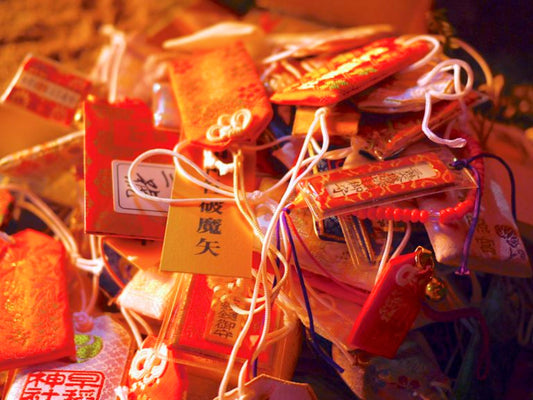Shotengai Magazine

Everything You Need Know About Omamori: Japan's...
Omamori are traditional Japanese amulets or talismans, usually sold at Buddhist temples and Shinto shrines. They are made of silk or cloth and contain prayers, blessings, or wishes inside.
Everything You Need Know About Omamori: Japan's...
Omamori are traditional Japanese amulets or talismans, usually sold at Buddhist temples and Shinto shrines. They are made of silk or cloth and contain prayers, blessings, or wishes inside.

Miko: The Shrine Maiden
Miko are the shrine maidens with a deep understanding of Shinto tradition and culture. They have mastery of the skills and discipline necessary to carry out their duties with grace and...
Miko: The Shrine Maiden
Miko are the shrine maidens with a deep understanding of Shinto tradition and culture. They have mastery of the skills and discipline necessary to carry out their duties with grace and...

Japanese Scenery (III): Senso-ji Temple
Located in a city of temples, Senso-ji Temple is the oldest one, with a history of over 1300 years. With over 30 million annual visitors, it is the most popular...
Japanese Scenery (III): Senso-ji Temple
Located in a city of temples, Senso-ji Temple is the oldest one, with a history of over 1300 years. With over 30 million annual visitors, it is the most popular...

Nihon Teien: The Aesthetic Japanese Garden
Nihon Teien is traditional Japanese landscaped gardens that incorporate Japanese aesthetic and philosophical ideas, the designers of which avoid artificial decorations and highlight natural landscapes. It is a refuge from...
Nihon Teien: The Aesthetic Japanese Garden
Nihon Teien is traditional Japanese landscaped gardens that incorporate Japanese aesthetic and philosophical ideas, the designers of which avoid artificial decorations and highlight natural landscapes. It is a refuge from...

Kodo: Japanese Art of Incense
Kodo is one of the three classical Japanese arts of refinement. It is an art of Japanese incense. The essence of Kodo is experiencing Zen rather than smelling the fragrance. Kodo...
Kodo: Japanese Art of Incense
Kodo is one of the three classical Japanese arts of refinement. It is an art of Japanese incense. The essence of Kodo is experiencing Zen rather than smelling the fragrance. Kodo...

Yokai (I): Japanese Supernatural Creatures
Fairy tales, ghost stories, and folklore... They are an indispensable part of cultures worldwide. In Japanese, yokai refers to all monsters and supernatural beings, ghosts, gods, possessed spirits, urban legends,...
Yokai (I): Japanese Supernatural Creatures
Fairy tales, ghost stories, and folklore... They are an indispensable part of cultures worldwide. In Japanese, yokai refers to all monsters and supernatural beings, ghosts, gods, possessed spirits, urban legends,...
